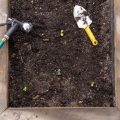Introduction to Sustainable Crop Rotation
Crop rotation is a cornerstone of sustainable gardening, particularly within the context of British organic allotments. This age-old practice involves systematically changing the types of crops grown in specific plots from season to season, rather than cultivating the same crop repeatedly in one area. The fundamental principle behind crop rotation is to maintain and enhance soil health, prevent the build-up of pests and diseases, and optimise productivity over time. In the UK, where allotment gardening is both a cherished tradition and a practical solution for local food production, employing effective crop rotation strategies is essential for achieving resilient, productive plots without reliance on synthetic chemicals. By carefully planning what to grow and when, organic gardeners can reduce nutrient depletion, disrupt pest life cycles, and improve soil structure – all crucial factors for long-term success in the British climate.
Traditional Crop Rotation Systems in the UK
Crop rotation has long been a cornerstone of sustainable agriculture in the United Kingdom, with its origins rooted in centuries-old practices that continue to influence modern organic allotment management. The British four-course system, developed during the 18th century Agricultural Revolution, remains a prominent example of how structured crop rotation can enrich soil health and bolster yields without reliance on synthetic inputs.
The Four-Course System Explained
The traditional four-course rotation typically involves a sequential planting of root crops, legumes, cereals, and leafy vegetables. This approach was designed to balance soil fertility, interrupt pest and disease cycles, and minimise nutrient depletion. The sequence is as follows:
| Year | Crop Group | Benefits |
|---|---|---|
| 1 | Root Crops (e.g., potatoes, carrots) | Breaks up soil; utilises nutrients left by previous crops |
| 2 | Legumes (e.g., peas, beans) | Fixes nitrogen; enhances soil fertility for subsequent crops |
| 3 | Cereals (e.g., wheat, barley) | Takes advantage of improved nitrogen levels; suppresses weeds |
| 4 | Leafy Vegetables (e.g., cabbage, spinach) | Utilises remaining soil nutrients; completes the cycle before repeating |
Modern Adaptations for Organic Allotments
While the four-course system provides a reliable framework, contemporary organic growers often tailor rotations to fit smaller plot sizes and diverse plant selections typical of British allotments. Allotmenteers now commonly include additional groups such as brassicas or alliums and may rotate over three or five years rather than four. Incorporating green manures and cover crops has also gained popularity as a means to further enhance soil structure and biodiversity.
Cultural Significance and Practicality in the UK Context
The enduring use of crop rotation within British gardening culture reflects both tradition and pragmatism. Its adaptability allows even urban gardeners with limited space to implement sustainable practices that align with Soil Association organic standards. By respecting these time-honoured systems while embracing innovative adaptations, UK allotment holders contribute meaningfully to local food security and ecological stewardship.
![]()
3. Benefits of Crop Rotation for Organic Allotments
Adopting sustainable crop rotation practices provides a multitude of advantages for organic allotmenteers in the UK, particularly regarding pest management, nutrient cycling, and disease prevention. These benefits are crucial in maintaining productive and resilient plots without relying on synthetic inputs.
Pest Management
Certain pests tend to specialise in particular plant families. For example, cabbage root fly and clubroot target brassicas, while carrot fly is notorious among umbellifers. By rotating crops each season, organic growers disrupt pest life cycles, making it harder for populations to build up year after year. For instance, moving brassicas to a different bed each year helps prevent persistent infestations that can devastate yields.
Nutrient Cycling
Different crop groups have varying nutrient requirements and contributions. Legumes such as peas and beans fix atmospheric nitrogen into the soil, enriching it for subsequent crops like leafy greens or roots that have higher nutrient demands. Rotating these groups ensures that soil nutrients are replenished naturally, reducing the need for external fertilisers. Many UK allotmenteers use a classic four-bed rotation: potatoes (heavy feeders), legumes (nitrogen fixers), brassicas (benefit from residual nitrogen), and roots (prefer less fertile soil), ensuring balanced nutrient use across seasons.
Disease Prevention
Soil-borne diseases such as onion white rot or potato blight can persist if host plants are grown repeatedly in the same area. Crop rotation minimises this risk by breaking the cycle of host-specific pathogens. For example, avoiding planting alliums in the same plot more than once every four years helps keep onion white rot at bay—a common challenge on British allotments.
Examples Relevant to UK Allotmenteers
A practical application might involve following potatoes with legumes, then brassicas, then roots. This approach not only supports healthy soil but also aligns with traditional British allotment planning, which often features compact plots requiring efficient use of space and resources. Experienced growers may also incorporate green manures or cover crops between rotations to further enhance soil structure and biodiversity, illustrating how crop rotation underpins both productivity and sustainability in UK organic gardening.
4. Designing a Sustainable Crop Rotation Plan
Creating a robust crop rotation plan is essential for maximising productivity and maintaining soil health on organic allotments in the UK. A well-designed plan should consider the unique challenges and opportunities presented by small-scale British plots, including limited space, variable weather, and the desire to grow a diverse range of crops. Below, we explore key principles and practical steps for developing an effective rotation scheme tailored to local conditions.
Assessing Your Allotment’s Needs
Begin by evaluating your available space, typical soil type, and the crops you wish to grow. British allotments often feature compact plots, so efficient use of every bed is crucial. Take note of sun exposure, drainage patterns, and any existing perennials or permanent structures. These factors will influence which crops are best suited to each area throughout the year.
Structuring Your Rotation: The Four-Bed System
The traditional four-bed system remains popular among UK growers due to its simplicity and adaptability. This approach groups crops into families—legumes, brassicas, roots, and others—and rotates them annually to prevent pest buildup and nutrient depletion. Here’s an example layout:
| Year | Bed 1 | Bed 2 | Bed 3 | Bed 4 |
|---|---|---|---|---|
| 1 | Legumes (peas/beans) | Brassicas (cabbage/kale) | Roots (carrots/beetroot) | Potatoes/Other |
| 2 | Brassicas | Roots | Potatoes/Other | Legumes |
| 3 | Roots | Potatoes/Other | Legumes | Brassicas |
| 4 | Potatoes/Other | Legumes | Brassicas | Roots |
Seasonal Considerations for British Climate
The UK’s climate is characterised by cool springs and unpredictable summers, so careful scheduling is vital. Opt for hardy early sowings (such as broad beans or spring onions) and stagger plantings to make best use of short growing seasons. Mulching beds over winter with compost or green manures can protect soil structure from heavy rainfall and boost fertility for spring planting.
Tactical Plot Layout Tips
– Narrow Beds: Raised or narrow beds improve drainage and accessibility.
– Succession Planting: Plan for quick-maturing crops (like radishes) between slower-growing varieties.
– Diversify Borders: Use plot edges for pollinator-friendly flowers or perennial herbs to enhance biodiversity.
– Cultivation Pathways: Maintain clear paths between beds to reduce compaction and allow easy access during wet periods.
A thoughtfully designed rotation plan not only aligns with organic growing principles but also ensures resilience against pests, diseases, and changing weather patterns common across British allotments.
5. Selecting Suitable Crops for Rotation
When planning a sustainable crop rotation scheme for an organic allotment in the UK, selecting suitable crops is essential to maximise soil health, reduce pest and disease pressure, and ensure a productive harvest. The key is to choose crops that are well-adapted to local conditions and align them within an effective rotational framework.
Understanding Crop Groups Commonly Grown in UK Allotments
UK organic allotmenteers typically cultivate four primary crop groups: legumes (such as peas and broad beans), brassicas (including cabbages, kale, and broccoli), alliums (onions, leeks, and garlic), and root crops (carrots, parsnips, beetroot). Many also incorporate potatoes and leafy greens like lettuce or spinach. These groups are chosen for their adaptability to the British climate and their value in home-grown diets.
Matching Crops to Rotation Plans
An effective rotation scheme usually follows a four-year cycle where each group occupies a different bed each year. For example:
Year 1: Legumes
Legumes fix nitrogen in the soil, improving fertility for subsequent crops.
Year 2: Brassicas
Brassicas benefit from the nitrogen left by legumes but require rich soil and can be vulnerable to clubroot; rotating helps break disease cycles.
Year 3: Root Crops
Root vegetables thrive after brassicas as they prefer less fertile soil; rotation limits build-up of pests such as carrot fly.
Year 4: Potatoes or Miscellaneous Crops
Potatoes help suppress weeds and benefit from nutrient-rich soils while also breaking up the ground structure.
Tailoring Crop Choices to Local Conditions
Selecting varieties bred for UK conditions—such as blight-resistant potatoes or hardy winter cabbages—can further enhance success. Consideration should also be given to space available, personal dietary preferences, and opportunities for intercropping with quick-maturing salads or green manures to optimise plot productivity.
Integrating Companion Planting Principles
Complement your rotation plan with companion planting strategies—such as growing marigolds near brassicas to deter pests—which supports organic practices and biodiversity. By carefully selecting and grouping crops according to these principles, allotmenteers can promote soil health, minimise chemical inputs, and enjoy a bountiful organic harvest season after season.
6. Practical Tips and Common Challenges
Getting Started with Crop Rotation on UK Allotments
For many UK allotment holders, implementing sustainable crop rotation can seem daunting at first. Begin by mapping out your plot and dividing it into manageable sections—typically three or four beds for a classic rotation cycle. Assign plant families to each section, such as legumes, brassicas, roots, and solanaceae, ensuring each group moves annually to prevent pest build-up and nutrient depletion.
Best Practices for Effective Rotation
- Keep Accurate Records: Maintain a simple diary or chart documenting what was grown where each year. This helps avoid accidental repetition and supports long-term soil health.
- Use Green Manures: Between main crops, sowing green manures like clover or vetch can improve soil structure and fertility, particularly important in the UKs often heavy soils.
- Plan for Succession: Consider both spring and autumn planting schedules to maximise use of space while maintaining rotation integrity.
Common Challenges Faced by UK Allotmenteers
- Limited Space: Many UK plots are compact, making full rotations challenging. In such cases, focus on rotating core susceptible crops (e.g., potatoes and brassicas), while integrating companion planting to mitigate pests elsewhere.
- Persistent Pests and Diseases: Clubroot in brassicas or potato blight are common issues. Choose resistant varieties and ensure thorough removal of infected plant material at season’s end.
- Soil Variability: Urban allotments often have mixed-quality soils. Regularly amend beds with well-rotted compost and test soil pH to maintain optimal growing conditions across all sections.
Troubleshooting Tips
- If a disease outbreak occurs, consider extending the rotation period for that family beyond the standard three years.
- If space is tight, try vertical growing for certain crops (like beans) to free up ground for rotation groups.
Cultivating Community Knowledge
Finally, don’t underestimate the value of local experience—connecting with neighbouring plot holders and local gardening societies provides invaluable insight into site-specific challenges and proven solutions. By combining practical planning with community support, UK allotmenteers can foster resilient organic plots through thoughtful crop rotation techniques.


